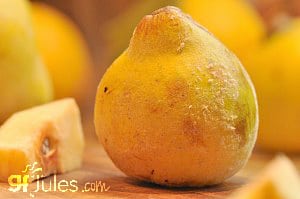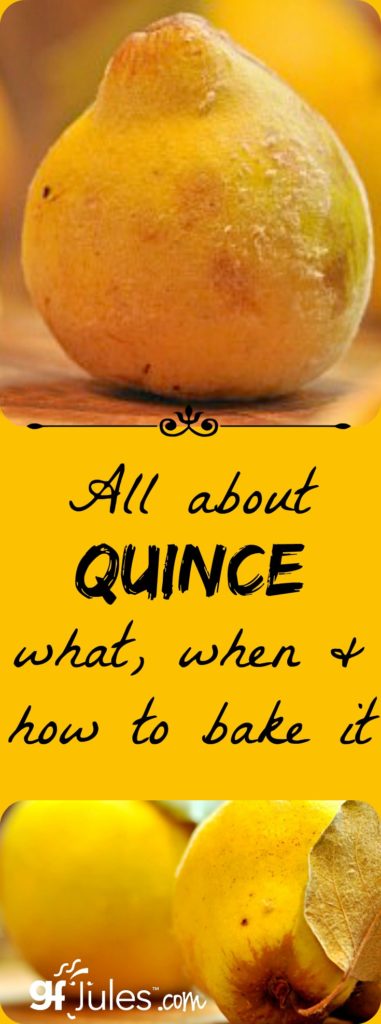I seem to recall in the deep dark recesses of my mind, my grandmother wistfully mentioning the quince fruit. I will allow for the possibility that I am subconsciously romanticizing that she actually mentioned it, but I really feel like she did. At any rate, until now I had never seen a quince, nor had I any notion of what it tasted like, apart from the caviar-sized portions of its paste found on expensive restaurant cheese plates.
So it was that elusive quince had achieved an almost mythological stature in my mind: a fruit from days of yore, now so rare that it is only doled out in sparing and measured portions at high-brow restaurants.
Hence the context for my squeal of glee last weekend, upon finding an actual peck of the fruit at a roadside stand in Western Maryland! I had to explain myself to the ladies at the stand, as I oohed and aahed over this odd little fruit, photographing it from every angle and plotting all the recipes I would make with my find! I fear they still thought I was mad, but it’s no matter. I was and am thrilled to have finally found it grown in North America!
Let me introduce you to the quince: an unassuming fruit with a strong perfume that reminds you of the apple and pear to which it’s related. Although it is rare to find quince growing in the US, it is still grown in Asia, South America, Mediterranean Europe and the Middle East.
Its apple-like qualities make it a favorite for jellies like marmalade, which apparently originally meant “Quince Jam” (the Portuguese word for quince is “marmelo”). The fruit is quite ancient, likely preceding the apples we know and love today. The Romans wrote recipes for it, and the Greeks associated it with the goddess Aphrodite. Biblical research even turns up quinces – it is believed that the “apple” from the Song of Solomon and even the forbidden fruit from the Garden of Eden were actually golden quinces!

The fruit is tolerant of cold, and ripens in late autumn, making now the perfect time for your quince-focused recipes! The fruit is still immature when green, and covered in a peach-like soft fuzz which rubs off when it changes color to yellow, but remains quite hard. It needs to be cooked to soften the fruit for most any recipe, so allow yourself some time for this step when using it for baking.
Now onto the recipes!
Apple Quince Easy Oatmeal Crisp


























Can this fruit be grown in east texas zone 8
So, if quince is biblical forbidden fruit can we call this devilish delish….
Love it, Felicity! LOL!
~jules
I live in Tasmania, Australia. We have been in our current home for 11 months and have a quince tree that produces very large quinces and I am about to make your mini quince and apple pies. My mother and a dear friend have made quince jelly and quince jam from the harvest from our tree.
Ooooh Trindy, that sounds so perfect! Enjoy the pies! Lucky girl to have a source for quince jelly and jam, too!!!
~jules
I have a quince bush in my yard that produces a lot of fruit each fall, more than I use. Can I ship you some?
Wow Kathy, that is so sweet! I would LOVE some of your quince! Send an email to Support@julesglutenfree.com for the address. Thank you!!!
We had a quince tree on our farm as a kid. I don’t remember the fuzz, but biting into one would take all the moisture out of your mouth!! We were told it was used for its pectin in jams and jellies…